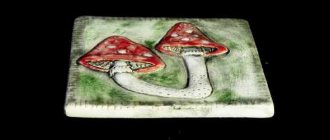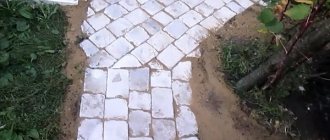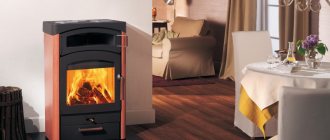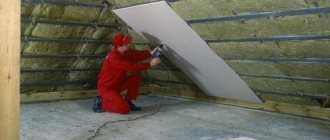CLAYS (a. clay; n. Tone; f. argiles; i. argilla) - sedimentary rocks consisting mainly of clay minerals; with water they form a plastic dough, which, when dried, can retain its given shape, and after firing, obtain the hardness of a stone.
- Characteristics and properties
- Classification and types
- Being in nature
- Groups:
- Low-melting clays
- Cement clay
- Fireproof and refractory
- Kaolin
- Adsorption clays
Properties of clay
Clays also include some rocks that do not naturally have plasticity and do not soak in water (for example, mudstones). According to particle size, clays include rocks consisting by mass of more than 50% of particles up to 0.01 mm. As the amount of coarse clastic material increases, clays transform into silts and sands. The main chemical components of clays are SiO2 (30-70%), Al2O3 (10-40%) and H2O (5-10%); Fe2O3 (FeO), TiO2, CaO, MgO, K2O, Na2O, CO2, and less often MnO, SO3, P2O5 are present in minor quantities. The composition of clays includes mainly kaolinite, monothermite, montmorillonite, halloysite, hydromicas, and sometimes palygorskite.
Step-by-step process for plastering a stove
- Heat the stove. The walls of the furnace must warm up well before starting work. This step is mandatory even in the hot summer season.
- Surface preparation.
- Applying the first layer. You need to moisten the surface to be plastered with water (with a brush or a spray bottle), and then apply a thin layer of liquid clay (for this you use a wash brush). Before the next stage, this plastered layer should dry out a little.
- Reinforcement.
The specifics of this step depend on the material chosen: Burlap. The material must be cut and soaked in a solution of liquid clay. After this, it needs to be distributed throughout the oven: the laying process is carried out in the direction from top to bottom, the overlap should be about 50 mm. If such material is used for reinforcement, the stove must be protected from overheating during operation; - Plastering. The solution is applied from top to bottom, each layer must be even - its thickness should not be more than 5 mm. After the solution has set, it should be rubbed in using a grater in a circular motion. If the plaster has hardened too much, it can be moistened with water. Some home craftsmen recommend, after applying the plaster solution, to smooth it with a rag (it must first be moistened in the same solution).
After finishing applying the plaster, it needs to be allowed to dry. If cracks appear, they can be widened using a regular knife, then moistened with water and covered with a solution (if a clay-based solution was used, for these purposes you can use the remains of the plaster, which can be stored in an airtight container).
At this stage, the surfaces are completely cleaned of old mortar, dirt and dust. The seams between bricks or stone are cleared with a trowel and hammer to a depth of 150 mm. This will ensure reliable adhesion of the surface to the plaster composition.
Important! Plastering of a new stove is carried out 3 weeks after completion of masonry work and complete drying of the stove mortar. Failure to comply with the established deadlines may result in the decorative layer beginning to crack and deform. After dismantling the old cladding, the surfaces are cleaned with a wire brush and a clean dry rag to avoid dirty stains that may appear through the fresh plaster layer.
After dismantling the old cladding, the surfaces are cleaned with a wire brush and a clean dry rag to avoid dirty stains that may appear through the fresh plaster layer.
The prepared surfaces are treated with an antifungal primer. 10 cm nails are driven into the cleaned seams at an angle with the heads raised above the surface up to 0.5 cm. The horizontal step between nails should be 15 cm, the vertical step - every 2 rows. A wire is fixed to the nails, and a metal mesh is placed on top. The reinforced base will ensure good adhesion of the plaster to the surface being treated.
You can plaster the stove with ready-made store-bought or homemade solutions.
If a ready-made dry composition is used for work, then the kneading is carried out according to the instructions:
- Water is poured into the container. Next, dry mass is added in the proportions indicated on the package.
- Kneading is carried out with a construction mixer until a viscous homogeneous mass is obtained.
- The finished mixture is kept for a quarter of an hour, mixed again, and then used for surface treatment.
To independently mix a solution for plastering surfaces, traditional components are used, which are mixed in the required proportions. Recipes for homemade compositions are given above.
The finished solution should be plastic and viscous, without air bubbles, lumps and dry inclusions.
Depending on the condition of the surfaces, the stove structure can be plastered in one of two ways.
Types of clay
Clays are classified according to their composition, origin, color, and their practical use. If one of the minerals predominates, the clays are named after this mineral - kaolinite, halloysite, etc. More often, clay is represented by a mixture of three or more minerals, i.e. is polymineral. Typically, clay contains impurities, fragments of various rocks or minerals, organic substances and newly formed minerals, with a high content of which there is a transition from clay proper to marls, clayey sands, clayey coals, etc. Their numerous properties depend on the chemical, mineralogical and granulometric composition of clays. physicochemical and technological properties (plasticity, swelling, shrinkage, caking, fire resistance, swelling, adsorption, etc.), which determine the industrial applications of clay and clayey rocks.
How to use it correctly
The basis of the composition is clay powder and water in the required proportion. During the production of fireclay, kaolin loses its plasticity. To restore the pliability and elasticity of the mixture, special additives are added to the composition. For each task, there are rules that allow you to obtain a strong fire-resistant material.
For laying the furnace
Plasticity indicators are often improved with kaolin sand. The white substance is sold in construction stores in bags. In one container, clay is mixed with the additive in proportions of 4 to 1, then water is slowly poured in small portions. To obtain a uniform consistency, professionals recommend using a special mixer.
In order for the ingredients to reveal their characteristics, the preparation is left for 3 days. The finished mixture resembles plasticine in thickness. The solution should not stick or flow easily, and there should be no lumps under your fingers. If you scoop it up with a trowel, the mass slowly slides off, without leaving a residual mark.
Features of technology for the stove Source stroyfora.ru
The presence of clay components is called fat content. The parameter is responsible for the plasticity of the finished material. You can increase or decrease the characteristic using sand or fireclay. Oversaturated solutions do not affect the quality of the stove, but due to “lean” options, the structure will crumble.
To find out the fat content of clay at home, you need to roll a ball from the finished raw materials. The samples are pressed down on top with a long board. If cracks appeared under low pressure, then the solution is “lean”. If ruptures occur at half the radius of the ball, it indicates high plasticity indicators, and at a third – average (normal). The last two types are suitable for construction work.
The surface to be treated must be prepared. The old finish is removed from the wall and the reinforcing mesh is fixed. In order for the product to hold tightly, a layer of solution must be applied on top. Knowing how long fireclay clay takes to dry, you can begin laying out the stove in 3-4 days.
The classic stove mixture consists of base material and sand. An experienced master uses at least 3 types of solution with different additives when working. Cement-lime varieties are recommended for the base and chimney. When assembling the frame, cement is added to the composition; for the combustion chamber, red clay is added.
Rules for using chamotte Source vbud.in.ua
Clays in nature
Clays and clayey rocks make up about half of all sedimentary rocks of the earth's crust. The main clay-forming process is weathering and physical and chemical decomposition of rocks containing alumina and silica. Favorable conditions for the formation of powerful weathering crusts are created on the platforms. When weathering crusts are washed away in water basins, well-exhausted clays are formed, which are found among sedimentary strata of all types (continental, coastal-lagoonal and marine).
According to the nature of the technical requirements of the industry, clays are divided into four most important groups: low-melting; fireproof and refractory; kaolins; adsorption (highly dispersed montmorillonite).
Mining Features
Clay extraction begins with preparing the area. This process takes quite a lot of time and includes: clearing the area of debris and vegetation, blasting operations, constructing paths for the passage of vehicles and delivery of equipment.
When directly developing a quarry, much attention is paid to creating the correct steepness of the slope. This parameter is the angle of inclination of the slope to the horizon or the ratio of the height to the layers of underlying clay. Ideally, at a height of 5 m, it should be 1:0.5, but if the soil is very wet, then this figure may be slightly different - 1:1.
How clay is mined in the summer
In summer, it is most advisable to mine rock using excavators. They remove the clay in layers until they reach the loam areas. At this stage, work in a particular location is considered completed, and the excavator begins work in another location. Usually the depth of the quarries during mining is small, but sometimes the rock lies at the level of the aquifer. In these cases, it is necessary to install drainage.
How clay is mined in winter
During the cold season and severe frosts, clay is extracted using the explosive mining method. In addition, they try to prevent deep freezing of the soil. To do this, the soil at the mining site is covered with sawdust, peat or other material with a low level of thermal conductivity. In the far north, greenhouses are used for these purposes - closed structures equipped with a whole range of heating devices. They effectively heat the soil into rock deposits.
Low-melting clays
Low-melting clays are polymineral, usually ferruginous-montmorillonite and hydromica (often with an admixture of sand and organic substances), fire resistance less than 1350 ° C. They are used for the preparation of coarse ceramic products, building clay bricks, tiles, drainage pipes, cement, etc. The best varieties of plastic clays are used for the manufacture of pottery and sculpture. Low-melting clays are used to produce expanded clay (see expanded clay raw materials). Harmful impurities are coarse inclusions, especially limestone and gypsum. The suitability of clay for the production of a particular type of product is determined by technological tests, as a result of which the product is manufactured under factory conditions and its quality is determined. State standards have been established for clay bricks, ceramic drainage pipes, expanded clay and other coarse ceramic products in the USSR. GOST 9169-75 “Clay raw materials for the ceramic industry” defines the main characteristics of the classification of raw materials. Republican standards apply to certain types of clays, for example, RST RSFSR 303-72 “Pottery Clay” takes into account clays intended for the manufacture of pottery. Low-melting clays are a common raw material and are not taken into account by the USSR state balance of mineral resources. In 1982, about 200 million m3 of clay were mined in the USSR for coarse ceramic products.
conclusions
Refractory clay is a natural material with many positive qualities:
- Ecological cleanliness.
- Production does not generate waste; surplus and low-quality parts are recycled for the production of less important materials.
- The materials do not emit harmful substances when heated for human health.
- Ovens made of material keep the room dry, even without heating.
- Improves the quality of other finishing materials when added to their composition.
- It is used for the manufacture of a large range of building materials and parts for various areas in industry.
- Universal material.
Cement clay rocks
Cement clay rocks are used in the cement industry to produce Portland cement clinker mixed with carbonate rocks. The cement industry uses mainly low-melting clays, as well as mudstones, shales, loams, etc., the suitability of which is determined mainly by their chemical composition. Cement clays contain silica, alumina and iron oxide in a certain ratio. The silica module is in the range of 1.7-3.5, the alumina module can vary from 1.0 to 2.5. The deficiency of individual components in clays is corrected by introducing natural or artificial additives (iron ore, bauxite, ash, etc.). Harmful impurities of cement clays - magnesium oxide, alkalis, phosphorus, sulfur compounds, chlorine, coarse material (fraction larger than 0.08 mm). There are no general requirements for cement clays. Their quality is studied in each individual case by institutes of the cement industry on the basis of special technological tests. The average consumption of cement clay per 1 ton of cement clinker is 350 kg. By industrial category, reserves of cement clays in the USSR have been explored to 4 billion tons; annual production is about 27 million tons (1983).
Use Cases
Kaolin can be used for furnace masonry. It is also used as plaster and for making decorative items.
In addition to being used for decorative purposes, chamotte clay is actively used when laying stoves and fireplaces
When building stoves, they look at the markings applied to the surface of the products. Usually the letter "Ш" is indicated. The material most often used is for masonry of the firebox, since its cost is high, so it is impractical to use it for the rest of the work. They lay it on special clay. Its characteristics are the same as those of brick.
Fireclay fireclay has a unique texture and composition
That is why designers paid attention to it and began to use it to produce unique blanks. These can be ceramic dishes, original figurines
To ensure greater plasticity, various impurities are added.
Fire-clay
Refractory and refractory clays are characterized by a high alumina content (20-42%), high binding capacity and plasticity; they serve as raw materials for various ceramic industries, primarily for the production of sanitaryware, fire-resistant and acid-resistant products. Refractory clays have a monomineral composition (kaolinite or monothermite) and a fire resistance of at least 1580°C. Refractory clays are usually not consistent in mineral composition and have fire resistance from 1350 to 1580°C. There are no uniform requirements for the quality of refractory and refractory clays. There are various technical conditions developed in relation to the raw materials of each individual deposit and the type of product made from it, which limit the fire resistance of clays, their granulometry, composition and content of iron, alkalis and some other chemical components. In addition, there are GOSTs for a number of fire-resistant, acid-resistant ceramic products and for building ceramic products, the suitability of clays for the manufacture of which is determined by semi-factory technological tests. In the USSR, there are 76 deposits of refractory and 94 deposits of refractory clays with balance reserves by industrial categories in quantities of 1398.1 million tons and 576.4 million tons, respectively (1983). The bulk of the reserves are located on the territory of the RSFSR and the Ukrainian SSR. Reserves of 20 refractory clay deposits and 3 refractory clay deposits exceed 20 million tons (Zatishanskoye - 93.5 million tons, Berlinskoye - 188.2 million tons). Mining is carried out mainly by open-pit mining, but some deposits (for example, Borovichskoye) are developed underground.
Material characteristics and processing technology
Fireclay is a very plastic material. In many ways, this is precisely why masters love him. It allows you to create almost any shape.
The color of fireclay clay can be any (both before and after firing). Most often, the content of fireclay chips in the material is approximately 20-40%, but the size of fireclay fragments varies between 0.1-2 mm. Of course, the crumbs can be so crushed that you cannot see them in the mass, in which case it is worth talking about finely ground fireclay masses. In such material, fireclay plays the role of a kind of thickening agent, but the shrinkage will be slightly higher than that of coarse masses.
Molding
Masses of fireclay are filled into plaster molds prepared in advance. If you really want to, you can work with this material on a pottery wheel, if you don’t mind getting your hands scrubbed with large ceramic particles.
The best products made from fireclay are large-sized products with thick walls. Both slabs and tiles come out well from it (much smoother compared to thinner masses).
Drying
Fireclay clay belongs to the category of open materials, which means that it freely allows water vapor to pass through. So drying will be much smoother than with related thin masses. However, do not forget that the walls of fireclay ceramics are thicker, so they need much more time to dry completely.
Burning
When firing, it is important to pay attention to the weight of the product. Heating and cooling will be slower than for thin-walled products, so it is better to fire too heavy products on a bed of clean fireclay chips (this will reduce shrinkage friction on the plate). The firing temperature is 1300–1500°C.
Decoration
It is best to choose decoration methods that will help emphasize the natural grain of the material. If you want the glaze to lay down in an even layer, then first smooth the surface of the product at the molding stage, before the fireclay has had time to dry.
Fireclay clay decor
The nuances of obtaining a production license
As is the case with other minerals, clay mining in our country can only be carried out with a license. The exception is for private individuals who mine rock for personal needs without the use of special equipment at a depth of no more than 5 m.
To obtain a license, you need to be well aware of all the nuances of the procedure, so it is best to use the services of a specialist. This process consists of the following steps:
- Selecting a specific site.
- Preparation of documents that indicate the financial condition of the company.
- Payment of all necessary government fees.
- Participation in auctions.
Immediately after obtaining a license, it is necessary to develop a project that will contain all the necessary information about the future development of rock deposits.











